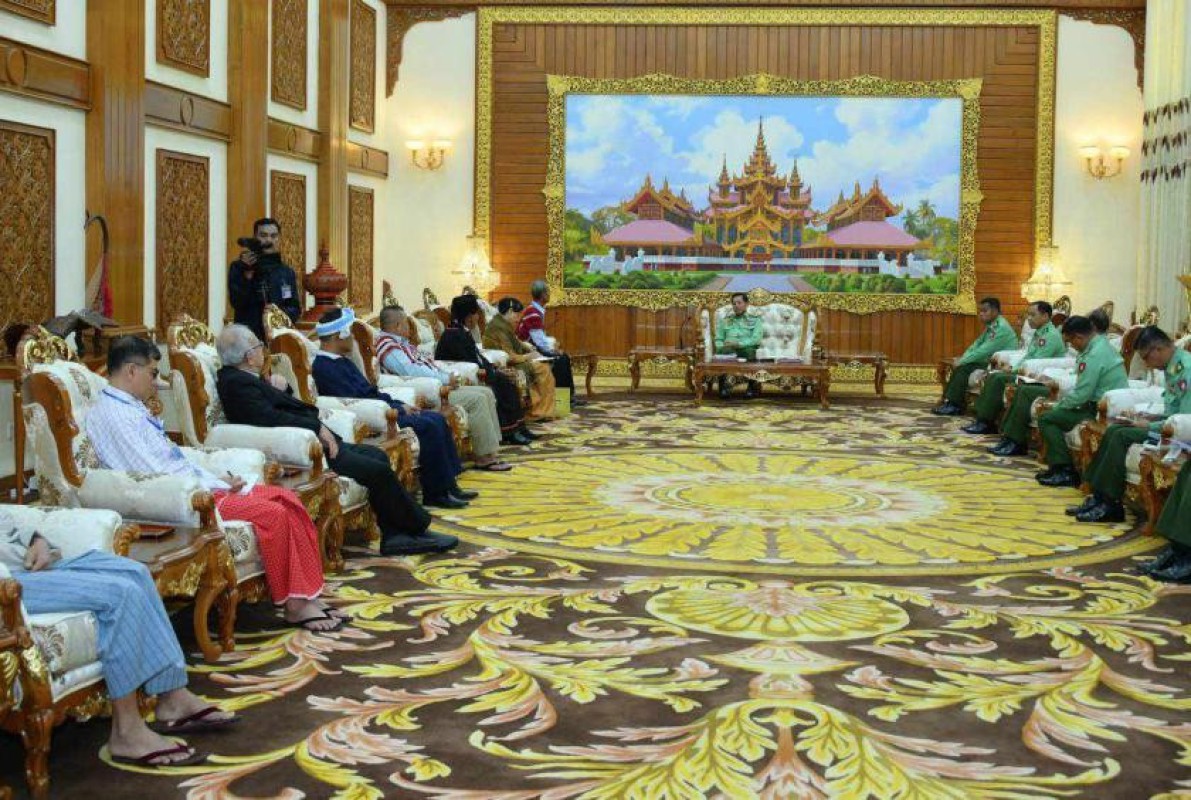Charting a path: SAC's efforts for political inclusion in Myanmar

910

Tin Zar Lynn (NP News) - Oct 9
Amid Myanmar's ongoing political crisis, the State Administration Council emphasizes its commitment to resolving issues through political means. The government underscores its objective to hold a free and fair multiparty election and to hand over the State power to the elected government, the fifth point of the five-point roadmap. Amidst ongoing challenges from armed groups and terrorists, the SAC invites all stakeholders, including ethnocentric armed organizations (EAOs) and the PDF terrorists, to engage in dialogue and participate in the electoral process, ultimately fostering peace and development for the nation.
The actions of PDF terrorists and various ethnocentric armed groups have led to significant destruction in cities across Myanmar, undermining state authority and exacerbating the ongoing conflict. Armed confrontations, attacks on infrastructure, and acts of terrorism have resulted in widespread damage to homes, businesses, and public facilities, displacing countless residents and disrupting essential services. This violence not only instills fear among civilians but also challenges the legitimacy of the state, complicating efforts to restore order and governance. As cities bear the brunt of these conflicts, the prospects for peace and development become increasingly elusive, hindering any attempts to foster stability and rebuild the nation.
Political solutions promote legitimacy and accountability, reducing the likelihood of violence and unrest. By prioritizing peaceful engagement over coercion or force, societies can create a foundation for sustainable development, allowing citizens to collaborate in shaping their governance and future. Ultimately, embracing political methods to resolve issues paves the way for lasting peace and unity.
While Myanmar faces significant challenges in its ongoing political crisis, the experience of Nepal offers valuable insights into the potential for integrating armed groups into the political process. Just as Nepal successfully navigated its post-conflict landscape through initiatives like the Comprehensive Peace Accord and Disarmament, Demobilization, and Reintegration (DDR) program, Myanmar can learn from these strategies to foster dialogue and cooperation among EAOs and the PDFs. By prioritizing inclusivity and engaging in constructive political discussions, Myanmar government can create a foundation for stability and peace, similar to what was achieved in Nepal. This comparative perspective underscores the importance of addressing underlying grievances and building trust among stakeholders in the quest for a harmonious society.
Steps toward political inclusion
Myanmar government has taken several important steps to prepare for the integration of armed groups into the political process, particularly in the context of ongoing conflict and instability. Initiating peace talks with various ethnic armed groups has been a crucial first step, aiming to negotiate ceasefires and agreements that facilitate political inclusion. The Nationwide Ceasefire Agreement (NCA), established in 2015, serves as a framework for peaceful negotiations and collaboration, allowing armed groups to engage in political discussions. Additionally, the government has created platforms for political dialogue, inviting these groups to voice their concerns and participate in shaping governance.
Furthermore, addressing underlying grievances related to ethnic rights, resource distribution, and local governance has been vital in encouraging cooperation. While these efforts reflect a commitment to creating a more inclusive political environment, significant challenges remain due to ongoing conflict and differing agendas among various groups.
Future challenges for the SAC
The SAC may face several challenges in inviting EAOs and PDF terrorists to participate in politics.
Firstly, trust deficits remain significant; years of conflict have created deep-seated mistrust between the government and these groups, making meaningful dialogue difficult. Many armed groups are skeptical about the SAC's intentions and whether it genuinely seeks to foster political inclusion.
Secondly, diverse agendas among various ethnic armed organizations complicate the process. Each group has its own historical grievances, objectives, and political aspirations, making it challenging to find common ground for negotiation and cooperation.
Another challenge is the ongoing violence and instability. Continued clashes between the military and various armed groups undermine efforts to create a conducive environment for political engagement. The presence of armed conflict hampers the SAC's ability to establish security and stability necessary for meaningful political discussions.
Lastly, international scrutiny and pressure further complicate the situation. The SAC must navigate the expectations of the international community, which often advocates for inclusivity and democratic reforms, while dealing with its own internal priorities and the realities of ongoing conflict.
These challenges collectively hinder the SAC's efforts to engage EAOs and the PDF terrorists in a constructive political dialogue, complicating the path toward stability and reconciliation in Myanmar.
In conclusion, the situation in Myanmar underscores critical importance of engaging in political dialogue to address the complex challenges facing the nation. The SAC's commitment to a multi-party election and its invitation to EAOs and terrorists represent crucial steps toward fostering peace and stability. However, significant hurdles remain, including deep-seated mistrust, divergent agendas among various groups, and ongoing violence that disrupts any meaningful engagement. For Myanmar to attain lasting peace and a unified future, it is essential to make ongoing efforts to close these gaps and cultivate a political atmosphere that promotes collaboration.